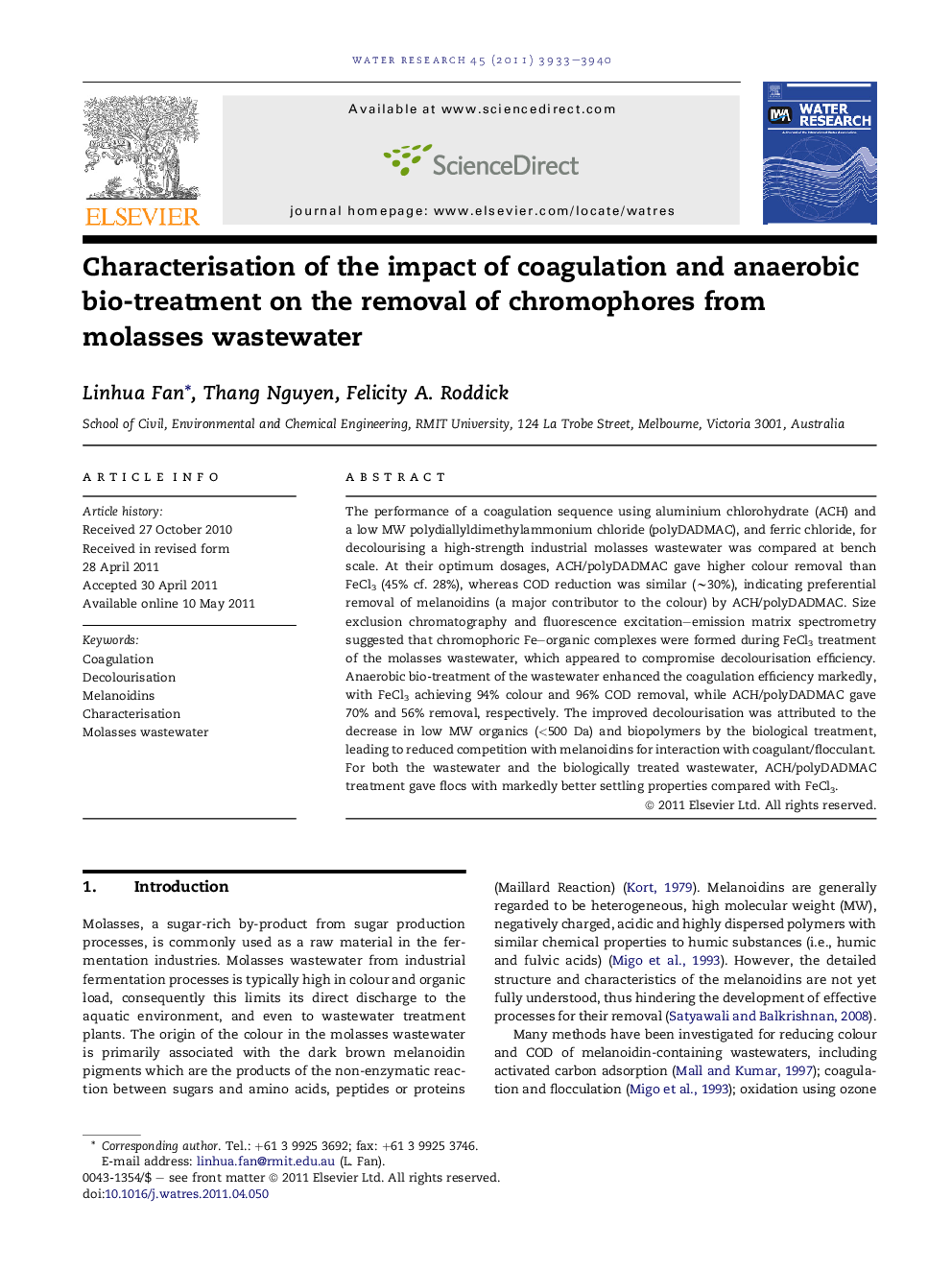| Article ID | Journal | Published Year | Pages | File Type |
|---|---|---|---|---|
| 4484093 | Water Research | 2011 | 8 Pages |
The performance of a coagulation sequence using aluminium chlorohydrate (ACH) and a low MW polydiallyldimethylammonium chloride (polyDADMAC), and ferric chloride, for decolourising a high-strength industrial molasses wastewater was compared at bench scale. At their optimum dosages, ACH/polyDADMAC gave higher colour removal than FeCl3 (45% cf. 28%), whereas COD reduction was similar (∼30%), indicating preferential removal of melanoidins (a major contributor to the colour) by ACH/polyDADMAC. Size exclusion chromatography and fluorescence excitation–emission matrix spectrometry suggested that chromophoric Fe–organic complexes were formed during FeCl3 treatment of the molasses wastewater, which appeared to compromise decolourisation efficiency. Anaerobic bio-treatment of the wastewater enhanced the coagulation efficiency markedly, with FeCl3 achieving 94% colour and 96% COD removal, while ACH/polyDADMAC gave 70% and 56% removal, respectively. The improved decolourisation was attributed to the decrease in low MW organics (<500 Da) and biopolymers by the biological treatment, leading to reduced competition with melanoidins for interaction with coagulant/flocculant. For both the wastewater and the biologically treated wastewater, ACH/polyDADMAC treatment gave flocs with markedly better settling properties compared with FeCl3.
► ACH/polyDADMAC preferentially removes melanoidins from molasses wastewater. ► Formation of chromophoric organics compromises colour removal by FeCl3. ► FeCl3 achieves higher colour removal than ACH/polyDADMAC for bio-treated wastewater. ► ACH/polyDADMAC gives markedly better floc settling properties than FeCl3.
